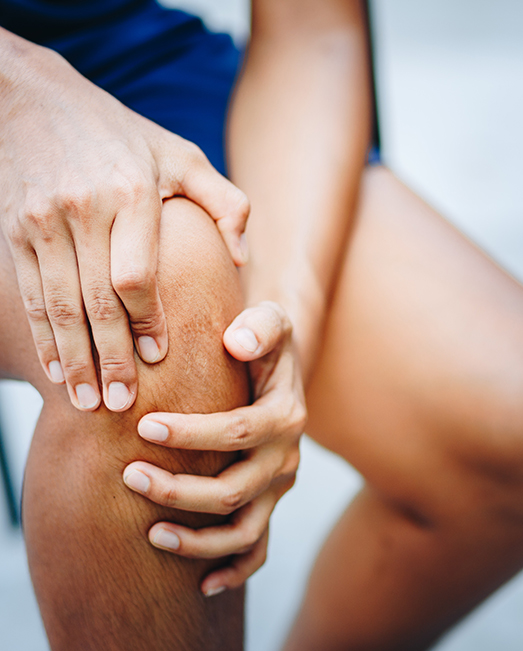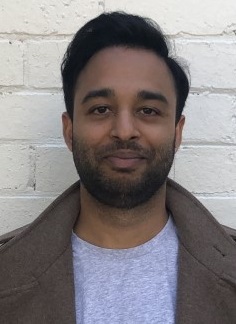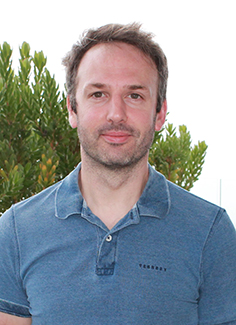Lifestyle
Copyright@ Australian Catholic University 1998-2026 | ABN 15 050 192 660 CRICOS registered provider: 00004G | PRV12008
Copyright@ Australian Catholic University 1998-2026 | ABN 15 050 192 660 CRICOS registered provider: 00004G | PRV12008

When it comes to injuries, a torn anterior cruciate ligament (ACL) is among the greatest of fears for athletes. Often requiring reconstructive surgery and many months of rehabilitation, this common knee injury can be life changing.
“If you talk to any specialist knee surgeon, they’ll say that with most athletes they work with who have done their ACL, it alters the way they compete for the rest of their lives,” says ACU's Dr Nirav Maniar, an expert on the biomechanics of ACL tears and other lower-limb injuries. “It can be quite a severe injury.”
With advances in surgical treatment, most modern-day athletes return to competition after an ACL reconstruction. And yet, few are ever quite the same.
“There are a lot of things that change after an ACL tear,” says Dr Maniar, a senior lecturer and researcher at the Sports Performance, Recovery, Injury and New Technologies (SPRINT) Research Centre. “The athlete has to think more about the way they move, the way they sidestep, and often minimise how much they use the injured leg.”
Beyond the realm of professional sport, the growing incidence of ACL tears and other knee-related injuries is a major concern. In 2022, Dr Maniar released ground-breaking research showing that knee injury rates had risen substantially in Australia over the past 20 years, with the sharpest increase in girls between the ages of five and 14.
As the most extensive analysis of knee injuries ever undertaken in Australia, the study sounded the warning that diagnoses could double in the next decade if current trends continue.
“The thing about ACL tears is that they tend to have long-term consequences, like early-onset knee osteoarthritis, and that makes it a costly injury to the nation,” says Dr Maniar, who co-authored the study alongside SPRINT’s director, Associate Professor David Opar, and other leading researchers.
“That’s why there’s a sense of urgency to do more work in this space, to do the analysis on programs that can prevent injury, to look at other interventions and new technologies with potential to improve treatment and recovery.”
On the frontline of this rise in ACL injuries are the specialists helping to manage knee-related conditions. Orthopaedic surgeons like Mr Timothy Whitehead, an internationally recognised knee expert who has treated everyone from elite athletes to weekend warriors and the elderly.
Recognising the value of advancing knowledge in injury prevention and management, as well as athletic assessment and performance, Mr Whitehead and his colleagues at Orthosport Victoria in Melbourne hatched a plan to establish a facility that integrates the latest advancements in research and technology into its multidisciplinary sports medicine practice.
“They had this vision to combine a multidisciplinary team with research-grade technology, providing their patients with knee injuries and other degenerative conditions with the highest level of care possible,” says Dr Maniar, who is also based in Melbourne.
“When they approached the team at ACU about this vision, we immediately expressed interest because there isn’t really anything else like this in Australia. We could see that it had potential for really positive outcomes.”
In mid-2023, the newly-established Orthosport Victoria Institute (OSVi) officially announced its partnership with ACU’s SPRINT Research Centre, which houses some of the world’s leading exercise and sports science scholars.


Dr Nirav Maniar and Dr David Opar
The resulting collaboration is an Australian-first, with ACU researchers and students working alongside orthopaedic surgeons, sports medicine physicians, physiotherapists, clinical exercise physiologists, exercise scientists, and strength and conditioning coaches.
Armed with the expertise and support to translate the latest research evidence into clinical practice, OSVi has a clear pathway to improving both short-term function and long-term outcomes for its patients.
“Athletes and patients … will benefit greatly from SPRINT’s established and developing laboratory and applied research techniques,” says Mr Whitehead, who is one of OSVi’s four founding directors. “The focus will be on prescribing an individualised program to improve weakness in targeted muscle groups, and in doing so, improve patterns of movement.”
Among the key pieces of technology that OSVi’s founders wanted to include in their facility was a co-designed biomechanics laboratory and testing space, allowing for a detailed analysis of patient strength, movement and flexibility.
With a 25-metre runway, force plates that capture ground reaction forces, isokinetic dynamometers that record applied force during strength tests, and 3D motion tracking technology to assess movement, clinicians can get an accurate gauge on the physiological capacity of their patients.
“If someone comes in with a torn ACL, typically they’ll have surgery, and then they have this long period where they might work with an exercise physiologist or a strength and conditioning coach who helps them to get back to full activity as quickly and safely as possible,” says Dr Maniar, who utilises biomechanical testing and a range of other technologies and methods in his research. “The tech is all about guiding and improving that process.”
While it has previously been challenging to incorporate novel technologies into clinical settings, recent advancements have seen more affordable versions become available.
“Some of the recent work we’ve done at SPRINT is to validate these technologies, ensuring that they compare well to a gold-standard measurement,” says Dr Maniar, adding that the use of such devices in clinical practice has many benefits.
“If we determine that these technologies do what they’re designed to do, it means that practitioners can use them to quantitatively assess their client’s movement paths rather than having to rely on subjective interpretation.
“They can measure exactly how much range of motion is going through a given joint, for example, and then quantitatively assess that over time to make sure that whatever intervention they’re giving a patient is resulting in improvements.”
He describes this advance as a “huge step forward” in musculoskeletal healthcare.
“It’s one of the fundamental things that ACU has provided in the early stage of the partnership with OSVi – helping them to bring in research-grade technology, and then teaching them how to use it and make sense of the data it generates.”
Overseeing biomechanical testing at OSVi is Dr Argell San Jose, a former ACU student who completed his PhD thesis under Dr Maniar, Associate Professor Opar, and Dr Ryan Timmins. This embedded full-time role, which is jointly funded by OSVi and ACU, allows for the establishment of research-quality data collection practices as part of standard clinical care.
OSVi will also facilitate research-based internships for ACU postgraduate students, as well as industry placements for undergraduates studying the sports-related disciplines of physiotherapy, clinical exercise physiology, and exercise science.
The unique collaboration between OSVi and ACU has many clear benefits, says Dr Maniar, extending from both partners to the wider community.
“At the fundamental level, the clinicians here at OSVi benefit from having access to researchers they can talk to and bounce ideas off – it helps them to translate current research and integrate it into practice,” he says.
“We researchers also benefit from the relationship because we have discussions with people who work with patients at all levels, and that can inform our work and act as a mechanism for initiating new research that’s ultimately going serve the community.”
Whether it’s helping an elderly person to recover from a hip replacement or using the latest technology and methods to ensure an elite athlete is returning from an ACL reconstruction as swiftly as possible, the end game is providing patients with the highest standard of clinical care.
“Whether you’re a clinician or a researcher, in sports medicine what we’re all aiming for is better outcomes for all types of patients,” Dr Maniar says. “That’s why in my mind, this is certainly a mutually beneficial partnership. It’s a no-brainer for me.”
Find out more about the SPRINT Research Centre’s projects and programs.
Keen to pursue a career in elite sport and gain access to some of the world’s leading researchers and practitioners? Check out ACU’s postgraduate programs in sport and exercise science.
Copyright@ Australian Catholic University 1998-2026 | ABN 15 050 192 660 CRICOS registered provider: 00004G | PRV12008